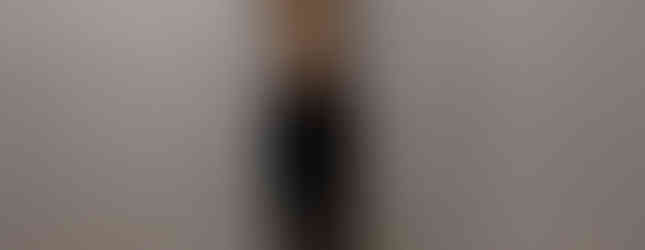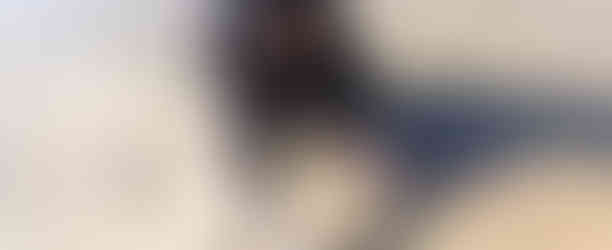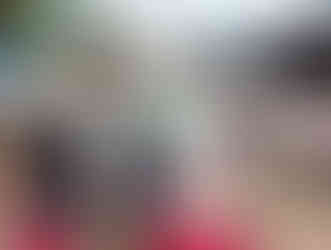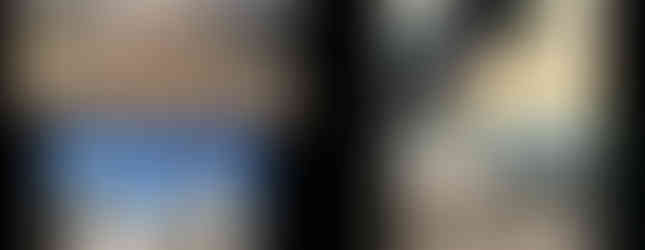Performance Art Project Asia: Part Three
- Aakshat Sinha

- Oct 24, 2020
- 8 min read
The dark cocoon of your beautiful mind
by Aakshat Sinha
The Performance Art Project Asia was held from 9 to 11 October 2020 and on 14 October. The festival curated by Satadru Sovan (India) and Mahmoud Maktebi (Iran), and organized by Rah Art Residency and HexxyDuxxyBox featured artists from India, Iran, Nepal, China, Philippines, Sri Lanka, Taiwan, and Bangladesh. Eun Su (Korea) couldn’t join and perform because heavy rains had pulled down the network connections where he was based.
The reviews given in Part One and Part Two focused on the performances on the first and second days respectively; Part Three is the concluding part to the series capturing the performances on day three (11 October) and day four (14 October).
As I sat down to review days three and four, a close connection between these performances to the following lines from the poem Every shadow having own specification with million tonality by Satadru Sovan became apparent to me. (It was this poem that was the inspiration behind the performance art festival around the concept of light and shadow.)
They stay hidden in the dark cocoon of your beautiful mind. Only to make their unforgettable appearance and corrupt it over time.
Day three:
Liu Hui is a performance artist born in Yuxi, China, who is now pursuing a Master’s degree in painting at the Yunnan Arts University. A member of the KunMing landscape painting society, he has participated in many workshops and his documentary and video works have been exhibited in China and Amsterdam.
In his performance, the black shape is like a shadow, but also a solid. In fact, he believes that we are our own shadow. Light and shadow always complement each other and just as a shadow cannot exist without light; neither can light without the shadow. The black cloth seems to take up a fair amount of the space visible to the viewer. Starting from a supine posture, Liu carries it at an arm’s length till he stands upright. Then he brings the ball shaped bundle forward as if it is an offering for the viewer. The duality of yin-yang concept seems to have been a possible inspiration.

Performance by Liu Hui
Performance by Liu Hui
Click arrow to see slideshow
Azam Tabatabei born in Esfahan, Iran studied printing, photography, design, and sculpture. She has been creating urban art sculptures, video art and performance art. Although her interest in psychology guides her art, ecological issues and urban spaces also inspire her. She questions why we continue to see relentless environmental degradation.
"As an artist who has lived in the Esfahan city, I understand the scarcity of water and the deliberately dried river has a significant influence on the environment and on the ecosystem of this area. The performance is rooted in the recycling wheel. As we know, everything eventually changes in to the soil, air or water in this recycle. Fish need water to spawn, so the dried river will make a major impact on their very existence."
As Azam goes about creating an embankment in a surviving puddle in the now dried river, her act shows how humans have changed the course of waterways, thereby changing the ecosystem. The entire act, with its set up of the stones along with the bodies of the dead fish, is a deeply meditative process, impacting both the artist as well as the viewer.

Performance by Azam Tabatabei
Performance by Azam Tabatabei
Click arrow to see slideshow
Craphone Liu is a multidisciplinary artist from Taiwan. His art projects are mostly constructed with visual elements, music, and live performances. He has performed at many international performance art festivals in countries like China, Korea and Serbia. For the performance at this festival, he describes his inspiration as thus:
"Our body is composed of muscles, bones, internal organs, epidermis, etc. Each system has its most primitive function and impulse. I wish to see what kind of moods can different body postures produce."
Craphone worked with a set stage and a camera angle that captured the terrace wall and the city with its skyscrapers and lights as a backdrop to his performance. A red ambient light with moving green lasers creates a filter and set up for the stage that is being watered with a hose pipe. As the body of the artist enters the stage and he finds new postures to move in, one is reminded of photographs of the cosmos. The body seems to traverse in free space, in a somewhat dream-like sequence. A possible connection to the fetus in the embryonic fluid is what immediately comes to mind.

Performance by Craphone Liu
Performance by Craphone Liu
Click arrow to see slideshow
Priyanthi Anusha is a practicing performance artist from Sri Lanka. With families locked in their homes owing to the pandemic, she feels duty-bound to ensure that the shadow of the social ills does not fall on her child who too is her shadow. Given that this is her child's reading phase, she believes that it is important to share with the child the current history, stories and an understanding of aesthetics from an early age.
In her performance she uses the pettagama, a chest (sounds somewhat similar to peti in Hindi which means a box). Privacy of the space allows the storage of valuables at home even when placed in the living room. Her effort to illuminate her world through her knowledge and love to give her child a brighter childhood that is more beautiful than her own can be seen in the act. This becomes apparent when the child joins Priyanthi, while she is busy writing and drawing with chalk on the insides of the chest with a torch and a diya (earthen lamp). Even as I write this I've goose bumps as I remember the smiles on the faces of the mother and child as they together go about creating a world of their own.

Performance by Priyanthi Anusha
Performance by Priyanthi Anusha
Click arrow to see slideshow
Umesh Nayak hails from Bhimpur, Odisha state in India and holds a Ph D in Fine Arts from Dr.B.R.Ambedkar University, UP. He has organized several art projects and now specializes in documentary film making. Umesh says,
"Hide and seek. I am in between I. A book, a chair and I. Hide and seek. If I am everything, then what is the role of the chair and the book? If the book and the chair are everything, then what is the role of I? Hide and Seek. Where is the exit and how does one exit? I am in between I. Hiding and seeking. How to enter and where to enter from? Hide and seek. I am in between I."
The performance has him tying a string around a bamboo structure from which he is then incapable to exit from, as he stands inside while running the ball of string around. He unties the string and steps out. Then, while standing on the outside, he ties the thread once more, which again doesn’t allow him to enter. Untying the string again, he starts to tie the string around his own body. That’s when he realizes that he is unable to climb the ladder placed against the wall or enter the bamboo structure. This whole episode is symbolic of our life trajectory as we keep tying ourselves up although we seek light (happiness) and find ourselves incapable of finding it any more.

Performance by Umesh Nayak
Performance by Umesh Nayak
Click arrow to see slideshow
Day four:
Paramesh Jolad is a Bengaluru based multidisciplinary artist whose artworks are based on social issues. He has been engaged with visual arts since 1994 and performance art since 2015 and has participated in many national and international visual and performance art events and festivals.
He feels that there can be several meanings ascribed to the concept of 'light and shadow'. He considers light as knowledge and shadow as the reflection of an object or of things. According to him, there is a general perception is to accept humans as the symbol the knowledge but unfortunately, that does not prove to be the case all the time. In his performance, Paramesh portrays the human being (himself) as the light and the garbage as its reflection. The black boots he wears on his feet are the only parts visible of the protagonist as he lies on the garbage pile feet first. As the camera pans around in a 360 degree view, we get a sense of the desperation that he feels through his thrashing feet.
As the camera pans a strange thing happens. No one takes notice of the act nor do they try to stop, come close, ponder over, or at least ask Paramesh what he is up to. A public performance would usually gather a crowd but here we have the artist performing on the garbage pile for almost ten minutes without a second glance from anyone, barring two men walking past, who take notice and briefly spoke to each other before moving on. It perhaps alludes to the impact of the social distancing that have been in place over the last few months.

Performance Light and shadow by Paramesh Jolad
Performance Light and shadow by Paramesh Jolad
Amir Varasteh is a social artist born in 1978 in Tehran. Having his first experiences in traditional arts, he worked in the field of urban arts for several years after his university education. He was the secretary of the first Tehran City Mural and Graphic Painting Council and then took over the management of the Berg Gallery. Dozens of murals, graffiti, land art, urban performances and installation by him have been displayed in the last decade, all of which have been performed in public and in live interaction with the audience. In the words of the artist,
"This is my third performance with the Cube as a medium, and the second one with emphasis on 'Freedom'. In this performance, I directly target myself as a critique on the intellectual. A huge head, supposedly pious and weighed with thoughts, that makes the head too heavy to be carried around. I insist on performing in front of people, making it a kind of social art. The performance uses various materials, including the body. Everything is in the service of the interaction; the body, the images, and all the technology that we are stuck with."
The Big Dang is what the artist calls his performance. The performance takes place in a very public space, on the Azaadi (freedom) square with the Azaadi tower in the background. This space is well frequented by people of all age groups and as we see during the performance people walk by, sit down, read, think and take selfies. There is this sense of modernized, tech savvy intellectualism that weighs down the white cube (head) that was once supposed to be light. The use of four different cameras with different frames (one fixed while the remaining three handheld) is rather interesting. Films used to be shot on four tracks to capture close ups and long shots. The Zoom screen allows four camera views at one go. Whatever might have been the prevailing thought for the artist, for the viewer the experience is quite surreal.
Performance Freedom by Amir Varasteh
Click arrow to see slideshow
Concluding Thoughts
Today, as we all are trying to find our way in the new ‘normal’, artists world over are also portraying similar concerns through innovative use of different mediums in an attempt to engage with their audience. Social distancing and lockdowns have led to more online platforms for streaming these arts. The onus lies with the organizers and artists to understand the shift in the medium and create accordingly. Many of the performances during the festival had features that were only possible because the medium was digital. This is a heartening trend as the online medium gives the opportunity for an artist from any part of the world to perform for viewers sitting across the globe. There is definitely greater scope to find even more innovative ways to create, to interact and to share the art by adapting to the changed situation. At the same time, this was a great step forward and I’m certain that more online events will follow.
Image credits: Mobile screenshots courtesy of Aakshat Sinha
Also read:

Aakshat Sinha is an artist and curator. He also writes poetry and has created and published comics. He is the Founding Partner of artamour.






































































































































Worth the read!